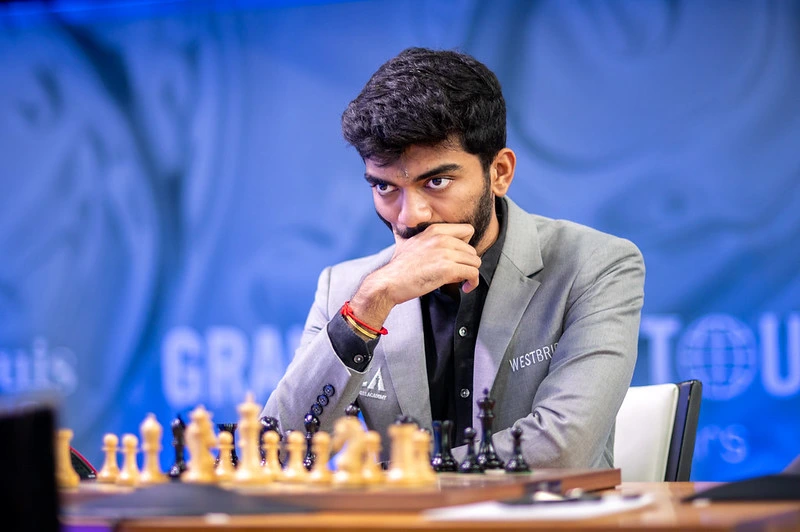Before the start of the 2025 Saint Louis Grand Chess Tour events, Yasser Seirawan sat down with reigning World Champion Gukesh Dommaraju. In the wide-ranging conversation, one moment stood out above all: Seirawan’s direct question about how the young Indian star had managed to capture the ultimate chess crown.
“I’ve asked all the players,” Yasser said. “They can’t come up with the answer. They don’t understand it. How did Gukesh win the World Championship?”
For a second, the usually composed Gukesh paused, then delivered a strikingly simple response:
“There was something maybe I just wanted more than anybody else. Sometimes that’s the explanation. More than anything else I’ve wanted in my life so far. Since childhood I used to dream about it, and I think I managed to make the most out of the opportunities I got. That’s all you can do.”
The answer captures not only the ambition that fueled Gukesh’s rise but also the mindset that separated him from a field crowded with prodigies. In an era when players like Praggnanandhaa, Arjun Erigaisi, Nodirbek Abdusattorov, and Alireza Firouzja are all pushing the limits of modern preparation, Gukesh insists that what mattered most was not simply preparation, talent, or calculation, but hunger.
Seirawan himself nodded at the response, noting that other grandmasters had offered technical explanations or spoke of “luck in a tournament,” but none articulated such a personal, almost visceral truth.
India’s Chess Explosion
When asked about India’s sudden dominance at the top of world chess, Gukesh pointed to the pandemic as a turning point. Online play and streaming, he noted, gave Indian youngsters the chance to compete and improve without constant travel. The effect was magnified by the presence of Viswanathan Anand, who not only served as an inspiration but also co-founded the WestBridge Anand Chess Academy.
“I was part of it,” Gukesh recalled. “At that time I was just a 2500-rated grandmaster. For sure it helped a lot in me becoming a top player.”
That growth, combined with government support and corporate sponsorships, created a foundation for talents like Gukesh, Arjun, and Praggnanandhaa to thrive.
Rivals and the Razor-Thin Margins
Pressed by Seirawan to name his most dangerous rivals, Gukesh resisted picking just one. “In the top 10, most of them are around the same strength,” he said. “The edge is very, very little, and most of it depends on who comes with a better mindset on that day or in that tournament.”
He pointed to recent results as proof. “Last year, me and Arjun were doing great, Prag wasn’t. This year, Prag has been winning a lot of tournaments. The difference is so small that it’s about who has that one percent extra motivation or energy.”
Among those he highlighted were Arjun Erigaisi, Praggnanandhaa, Abdusattorov, Firouzja, and Vincent Keymer—names that have already become fixtures at supertournaments despite their youth.
The Champion’s Road Ahead
What comes next for the 18-year-old is uncertain. Every elite player will be studying his games, looking for weaknesses, eager to topple the world champion. Yet, if Gukesh’s words in Saint Louis are any guide, he will not be rattled. He has already shown that desire—relentless, almost obsessive—can tilt the balance at the very highest level.
Or, as he put it himself: “Sometimes the explanation is just that I wanted it more than anybody else.”
What comes next for the 18-year-old champion is unclear. He is now the hunted, not the hunter. Rivals like Arjun and Praggnanandhaa have already shown they can win elite events, and every tournament will test his resolve. But in his own words, Gukesh has already given the clearest possible roadmap: the one who wants it most may still be the one who claims it.
Watch the 2025 Sinquefield Cup live here:

I’m a passionate board game enthusiast and a skilled player in chess, xiangqi and Go. Words for Attacking Chess since 2023. Ping me at Lichess for a game or chat.

